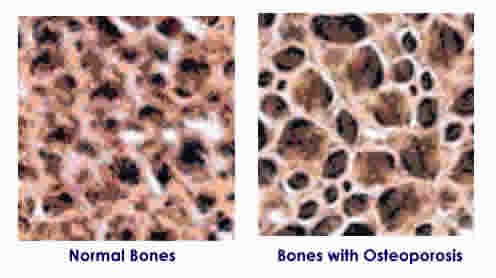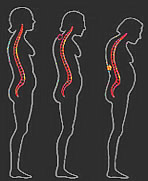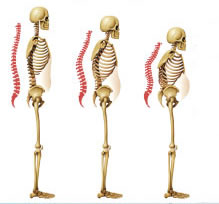Osteoporosis Exercise. To help in the prevention and treatment of osteoporosis, a regular regimen of exercise is recommendable. Regular exercise will increase your muscle strength, improve your balance and help you avoid falls — exercise may keep your bones from getting weaker.
Weight-bearing exercise and resistance training exercise may help develop bone mass and slow down the advancement of osteoporosis. The key to an effective exercise for osteoporosis is to find the safest, most enjoyable activities you can do. There is no one-size-fits-all recommendable kind of osteoporosis exercise that would best fit all osteoporosis patients. Overall health condition and the degree of bone-loss has to be carefully considered. It is best that you consult your doctor which exercise would best suit your condition.
For the meantime, dont let osteoporosis hinder your regular activities. It is advisable that you engage in activities that you enjoy as you are most likely to stick to it overtime.
Exercises like breeze walking, palaying golf and bowling are found to have a positive effect to most people with osteoporosis. But take caution in extremely strenuous exercises such as cross training for marathons-- this is counter productive and may increase the risk of bone fractures.
Other benefits in doing regular osteoporosis exercises:
- Regular exercise may bring good sense of well-being
- Increased ability to carry out daily tasks and activities
- Exercise Improves body posture
- exercise relieves or lessens joint and body pain
Resistance training exercise for osteoporosis
Resistance and strength training exercise for osteoporosis include the use of free weights, weight machines, resistance bands or water exercises to strengthen the muscles and bones in the arms and upper spine. Studies have shown that continued resistance training exercise may slow down the loss of bone mass.
When doing resistance training exercise for osteoporosis, focus on strengthening the muscles between the shoulder blades. With correct body posture and strenthened back muscles, this may reduce the harmful stress on the bones and help maintain the bone density.
Weight-bearing exercises for osteoporosis
Weight-bearing aerobic exercises for osteoporosis patients involve doing aerobic exercise on the feet, with the bones supporting the body weight. Weight-bearing exercises include walking, dancing, low-impact aerobics and gardening. These types of exercises, work by strentheing the supporting muscles of the legs, hips and lower spine and also help in reducing the bone density loss. Aerobic exercises also reduces the risk of cardiovascular disease.
Swimming and water aerobics have many benefits, but they don't have the impact your bones need to slow mineral loss. In cases of extreme osteoporosis or during rehabilitation following a fracture, however, these activities can be useful.
Flexibility and stretching exercise for osteoporosis
Flexibity and stretching exercise for osteoporosis help by increasing the mobility of joints. Being able to bend, extend and rotate the joints helps prevent muscle injury in osteporosis. Increased flexibility can also help improve body posture. Chest and shoulder stretches may be helpful, as may prone push-ups.
It is best that the muscles stretching exercise be done before and after every exercise session. They should be done gently and slowly, without bouncing. Relax and breathe deeply while you stretch. Avoid stretches that flex your spine or cause you to bend at the waist. These positions may put excessive stress on the bones in your spine, placing you at greater risk of a compression fracture.
Movements to avoid
Avoid High-impact exercises, such as running, jumping, or jogging. These exercises increase compression in your spine and lower extremities and can lead to fractures in weakened bones. Avoid jerky, rapid movements in general. Try to move in a slow and controlled manner.
Avoid exercises in which you bend forward and twist your waist, such as touching your toes, doing sit-ups or using a rowing machine. These movements also compress the bones in your spine. Other activities that may require you to bend or twist forcefully at the waist are golf, tennis, bowling and some yoga poses.

 What is Osteoporosis. Osteoporosis is a condition in which there is a progressive decrease in the density of the bones, weakening the bones, and making bone fractures likely.
What is Osteoporosis. Osteoporosis is a condition in which there is a progressive decrease in the density of the bones, weakening the bones, and making bone fractures likely. 

